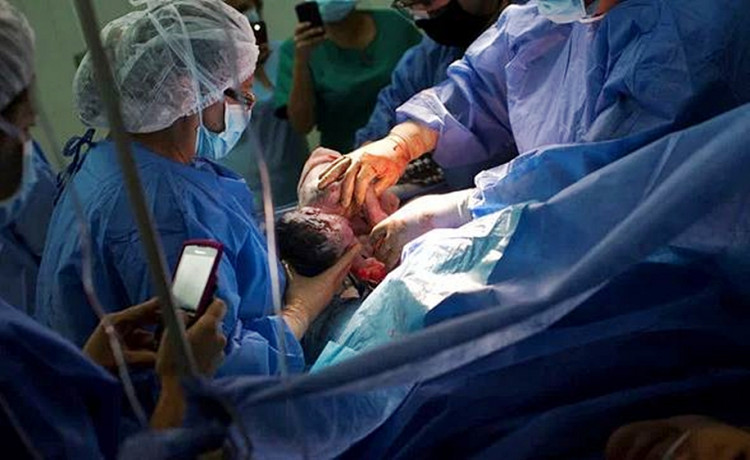One in five babies worldwide is delivered by Caesarean Section or C-Section, and much of this unwanted and unexpected rise might be due to unnecessary procedures by doctors and medical institutions.
A C-section is the use of surgery to deliver babies. IIt's often necessary when a vaginal delivery puts the baby or mother at risk.
A study published last week in the peer-reviewed medical journal The Lancet revealed the use of C-section worldwide has almost doubled since 2000. The study found the number of births by C-Section jumped from some 16 million (12.1 percent of all births) in 2000 to 29.7 million (21. percent% of all births) in 2015.
It also found that C-sections are more common in certain parts of the world. In 2015, C-Section deliveries were up to 10 times more frequent in Latin American and Caribbean regions, where it was used in 44.3 percent of births.
In the United States, 32 percent of births were by C-section in 2015, a jump from 23 percent in 2000. The study also showed 26.2 percent of births in the United Kingdom were by C-section in 2015, up from 19.7 percent in 2000.
The study found that C-section birth rates in 2015 were:
* 44.3% in Latin America and the Caribbean
* 32% in North America
* 29.6% in the Middle East and North Africa
* 28.8% in East Asia and the Pacific
* 27.3% in Eastern Europe and Central Asia
* 26.9% in Western Europe
* 18.1% in South Asia
* 6.2% in Eastern and Southern Africa
* 4.1% in West and Central Africa
The country with the lowest C-section rate (0.6% in 2010) was South Sudan while the country with the highest, at 58.1% in 2014, was the Dominican Republic.
Other countries where more than half of births were by C-section are Brazil, 55.5% in 2015; Egypt, 55.5% in 2014; Turkey, 53.1% in 2015; and Venezuela, 52.4% in 2013.
The study said it's been known that globally that C-section rates have been increasing for quite some time, but that now more than one in five babies are delivered by C-section is striking, said Dr. Ties Boerma, a professor at the University of Manitoba and the study's first author.
Dr. Ana Pilar Betran, medical officer at WHO Department of Reproductive Health and Research, said it is crucial that women who need cesarean sections are able to access this potentially life-saving procedure. On the other hand, unnecessary procedures must be avoided so the lives and well-being of women and their babies aren't endangered.
The World Health Organization (WHO) last week published new guidelines designed to reduce unnecessary C-sections. The new study noted that a rise in C-section for non-medical emergencies has become of concern because the procedure can pose risks, such as the risk of infection or postpartum heavy bleeding.
The key WHO recommendations include a requirement for a second opinion for C-section; educational interviews; use of clinical guidelines, and interventions aimed at health organizations and midwives.
The optimal frequency of C-section use in a population is hard to determine. In 1985, however, WHO said there was no justification for any region to have a cesarean section rate higher than 10-15%.






